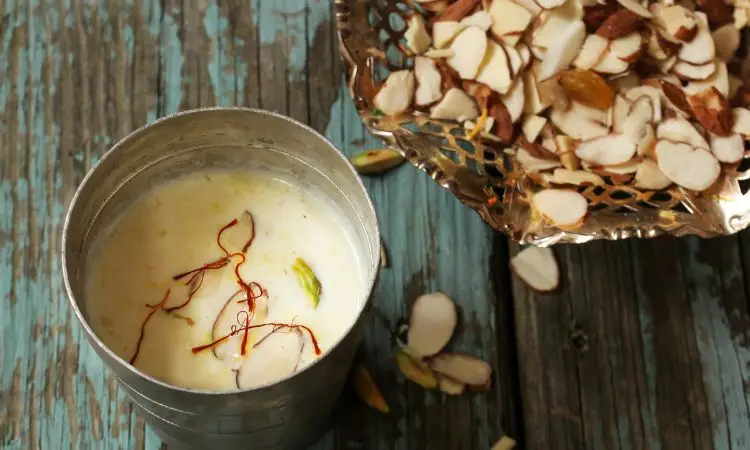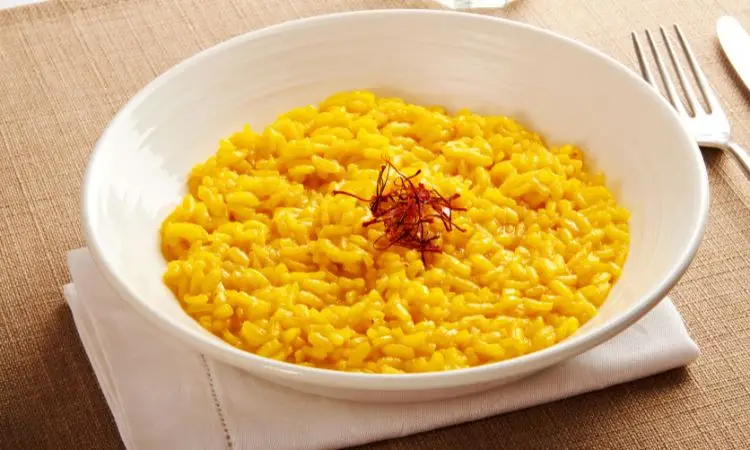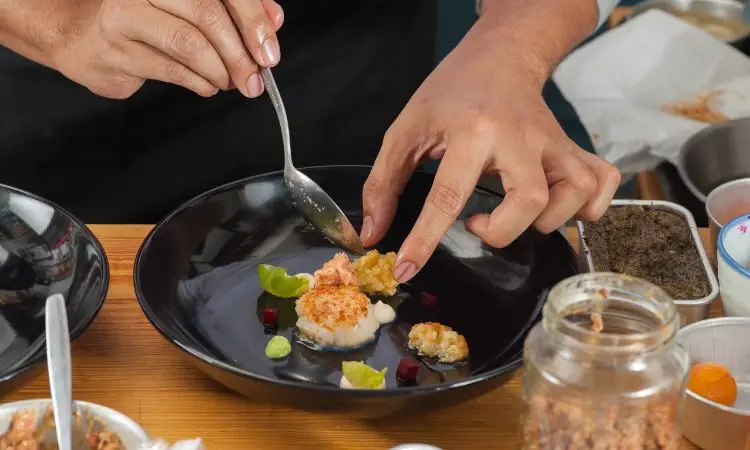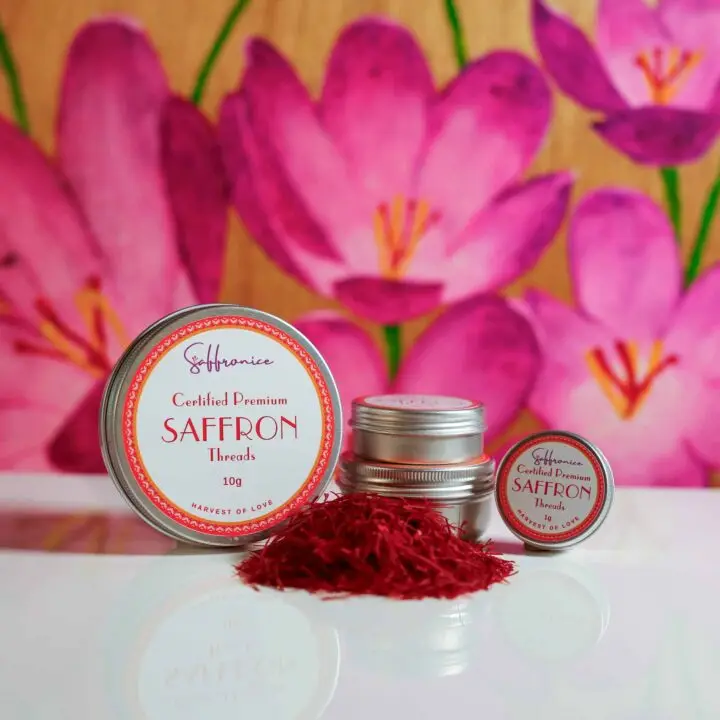📌 Quick Answer: Saffron rice is an aromatic dish made by cooking rice with saffron threads, creating a golden-colored, flavorful side dish popular in Persian, Indian, and Spanish cuisines. It offers antioxidants and potential mood benefits while requiring quality saffron and proper soaking techniques for best results.
Saffron: The Exquisite Golden Spice
Ever heard of saffron? It’s like that piece of jewelry that makes your dinner table shine. Often tagged as the “gold” of spices, this precious ingredient is more than just another seasoning—it’s a ticket to flavor town for dishes worldwide. Understanding what saffron is reveals why this spice, harvested from the flower of Crocus sativus, commands such reverence in culinary circles.
Each delicate thread is picked by hand in a labor-intensive process that explains its premium price. But saffron isn’t just about making food taste extraordinary—it delivers impressive health benefits too. With its powerful antioxidants, it might just be the ally your cells need to stay damage-free. Many cultures celebrate its mood-boosting properties, suggesting it could help chase away the blues and support digestive wellness.
Chef’s Professional Tip: When working with saffron in restaurant kitchens, I always tell my team that a little goes a long way. The key is patience—let those threads bloom in warm liquid to unlock their full potential.
Food Scientist’s Note: Saffron’s distinctive color comes from crocin, while its aroma derives from safranal. These compounds are heat-sensitive, so gentle cooking preserves both flavor and health benefits.

Saffron Rice Across Global Cultures
Globally adored, saffron rice dances between spicy and sweet to suit different cultural palates. Every cuisine adds its unique spin to this dish, turning it into something both familiar and refreshingly distinctive. Let’s take a culinary journey to see how saffron rice transforms across different kitchens.
Persian Cuisine: The crown jewel is “Tahdig”—crispy Persian rice that’s love at first bite. This technique creates a golden crust on the pot’s bottom, making it a treasured centerpiece at Persian feasts. Persian saffron cuisine showcases this and many other traditional preparations.
Indian Cuisine: In India, saffron rice serves as the aromatic foundation. The rice mingles with marinated meats and complex spice blends, creating layers of flavor that make every spoonful a journey through taste and tradition.
Spanish Cuisine: Spain’s famous “Paella” uses saffron rice as its golden canvas, incorporating seafood, chicken, and vegetables into a communal feast that brings families together around the table.
Middle Eastern Cuisine: No kebab celebration is complete without fragrant saffron rice, often enhanced with dried fruits and nuts that add textural contrast and natural sweetness.
Turkish Cuisine: “Zerde” flips expectations by transforming saffron rice into a dessert, sweetened with sugar and garnished with pistachios and cinnamon.
Cultural Pairing Guide
| Cuisine | Common Pairings | Special Features |
|---|---|---|
| Persian | Stews, yogurt, herbs | Crispy bottom layer |
| Indian | Curries, grilled meats | Layered cooking method |
| Spanish | Seafood, chicken | Wide pan cooking |
| Middle Eastern | Kebabs, dried fruits | Sweet-savory balance |
| Turkish | Nuts, dried fruits | Dessert preparation |
For authentic inspiration, explore our comprehensive saffron recipe collection that celebrates these diverse traditions.
Understanding Saffron’s Value and Health Benefits
Grasping why saffron commands premium prices and delivers exceptional health benefits is essential for anyone serious about creating outstanding saffron rice dishes.
The Economics of Luxury
Saffron ranks among the world’s most expensive spices—often more costly than gold by weight. Premium saffron can cost over $15 per gram, and this pricing reflects the extraordinary labor involved in its production. Harvesting one pound of saffron requires hand-picking approximately 75,000 flowers, with each flower yielding only three delicate stigmas.
This intensive process, combined with saffron’s seasonal availability and specific growing requirements, creates natural scarcity. When selecting saffron for your rice dishes, investing in authentic, high-quality threads makes the difference between mediocre and memorable results. Learning to identify real versus fake saffron protects your investment and ensures optimal flavor.
Remarkable Health Properties
Beyond its culinary prestige, saffron offers impressive wellness benefits that enhance any meal’s nutritional value:
Antioxidant Powerhouse: Saffron’s antioxidant properties come from compounds like crocin and safranal, which help protect cells from oxidative stress and may support healthy aging.
Mood Enhancement: Research suggests saffron may support mood regulation and emotional well-being, with some studies comparing its effects favorably to conventional mood-supporting supplements.
Anti-Inflammatory Support: The spice contains natural compounds that may help reduce inflammation throughout the body, supporting overall wellness and comfort.
Digestive Health: Traditional medicine has long celebrated saffron’s digestive benefits, and modern research continues exploring its gut-supporting properties.
For comprehensive information about these benefits, visit our detailed guide on saffron health benefits.
Mastering Saffron Rice Preparation
Creating exceptional saffron rice requires understanding both fundamental techniques and flavor enhancement strategies. Learning how to cook with saffron properly transforms ordinary rice into an extraordinary culinary experience.
Essential Saffron Rice Recipe
Ingredients:
- 1 cup basmati rice
- 1/2 teaspoon saffron threads
- 2 cups water or broth
- 1/2 teaspoon salt
- 1 tablespoon butter or olive oil
Method:
- Prepare the saffron: Soak threads in 2 tablespoons warm water for 10 minutes, allowing them to release their color and aroma
- Rinse rice: Wash basmati rice until the water runs clear, removing excess starch
- Sauté: Heat oil in a heavy-bottomed pot, and briefly sauté the rice until lightly toasted
- Combine: Add saffron mixture, remaining water, and salt
- Cook: Bring to a boil, reduce the heat, cover, and simmer 15-20 minutes
- Rest: Let stand off heat for 10 minutes before fluffing with a fork
Flavor Enhancement Techniques
Aromatic Additions:
- Replace water with chicken or vegetable broth for a deeper flavor
- Add whole spices like cardamom pods or cinnamon sticks
- Include finely diced onions and garlic for savory complexity
Textural Elements:
- Fold in toasted almonds or pistachios for crunch
- Add dried cranberries or raisins for sweetness
- Include fresh herbs like cilantro or parsley for brightness
Professional Tips:
- Use a 1:1.5 rice-to-liquid ratio for fluffy results
- Never lift the lid during cooking—trust the process
- Quality saffron should be deep red with minimal yellow stems

Sourcing and Storing Premium Saffron
Success with saffron rice begins with selecting and preserving high-quality saffron threads. Knowing where to buy saffron from reputable sources ensures authentic flavor and aroma.
Quality Indicators
- Color: Deep red threads with minimal yellow or white parts
- Aroma: Distinctive, honey-like fragrance
- Origin: Persian (Iranian), Kashmir, or Spanish varieties
- Price: Authentic saffron reflects its labor-intensive harvesting
Proper Storage Methods
Effective saffron storage methods preserve potency and extend shelf life:
- Store in airtight containers away from light and moisture
- Keep in cool, dark locations like pantries
- Use within 6 months for optimal flavor and color
- Avoid refrigeration, which can introduce moisture
Creative Saffron Rice Variations
Mediterranean Style
Incorporate roasted bell peppers, zucchini, cherry tomatoes, olives, and feta cheese for a sunny Mediterranean flavor profile that pairs beautifully with grilled seafood or lamb.
Persian Jeweled Rice
Combine saffron rice with dried cranberries, chopped pistachios, orange zest, and fresh herbs. This colorful presentation makes an elegant side dish for special occasions.
Sweet Saffron Rice Pudding
Transform saffron rice into a dessert by cooking it with milk, sugar, and warming spices. Garnish with nuts and dried fruits for a luxurious finish reminiscent of traditional saffron desserts.
Expert Tips for Perfect Results
Cooking Techniques
- Soaking is crucial: Always bloom saffron in warm liquid first
- Rice selection matters: Basmati or jasmine rice works best
- Temperature control: Gentle simmering prevents burning
- Resting period: Allow steaming time for an even texture
Garnishing and Presentation
- Caramelized onions: Add sweet, savory depth
- Toasted nuts: Provide textural contrast
- Fresh herbs: Offer color and brightness
- Citrus zest: Enhance aromatic complexity
Professional Applications
Chef’s Insight: In professional kitchens, we prepare saffron water in advance, steeping threads for hours to maximize color extraction. This technique ensures consistent results across large batches.
Food Scientist’s Perspective: The optimal water temperature for saffron extraction is 70-80°C (158-176°F). Higher temperatures can damage delicate aromatic compounds.
Health-Conscious Variations
Saffron rice naturally accommodates various dietary needs while maintaining its signature appeal. The dish is naturally gluten-free and can easily become vegan-friendly with simple substitutions.
For plant-based versions, replace butter with olive oil or coconut oil, and use vegetable broth instead of chicken stock. These modifications preserve the dish’s essence while meeting dietary preferences.
Perfect Pairings and Serving Suggestions
Saffron rice complements numerous dishes across different meal occasions:
Main Course Pairings:
- Grilled or roasted meats
- Seafood preparations
- Vegetarian curries and stews
Beverage Companions:
- Saffron tea creates a cohesive flavor theme
- Light white wines or herbal teas
Complete Meal Ideas:
- Mediterranean feast with grilled vegetables
- Indian dinner with curry and yogurt
- Middle Eastern spread with kebabs and flatbread
Conclusion: Your Saffron Rice Journey
Mastering saffron rice opens doors to a world of culinary possibilities, from simple weeknight dinners to elaborate celebration feasts. This golden grain carries centuries of tradition while offering modern health benefits that enhance any meal’s nutritional value.
Whether you’re drawn to the anti-inflammatory properties of this precious spice or simply love its incomparable flavor, saffron rice represents the perfect intersection of luxury and accessibility in home cooking.
The key to success lies in understanding saffron’s unique characteristics—from proper soaking techniques that release maximum flavor to storage methods that preserve its potency. Remember that quality saffron is an investment in your culinary repertoire, transforming simple rice into a dish worthy of the most discerning palates.
🔑 Key Takeaways:
- Soak saffron threads in warm water for optimal color and flavor release
- Use basmati or jasmine rice for the best texture and aroma absorption
- Quality saffron may cost more upfront, but it delivers superior results
- Proper storage in cool, dark conditions preserves saffron’s potency for months
- Cultural variations offer endless inspiration for creative adaptations
For continued inspiration and expanding your saffron expertise, explore our comprehensive seasoning tips and discover how this remarkable spice can elevate your entire cooking repertoire. From traditional Persian preparations to modern fusion creations, saffron rice remains a testament to the enduring power of exceptional ingredients in creating memorable meals.



